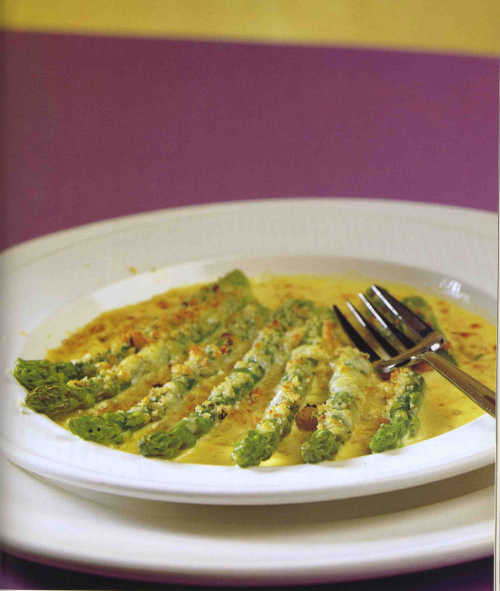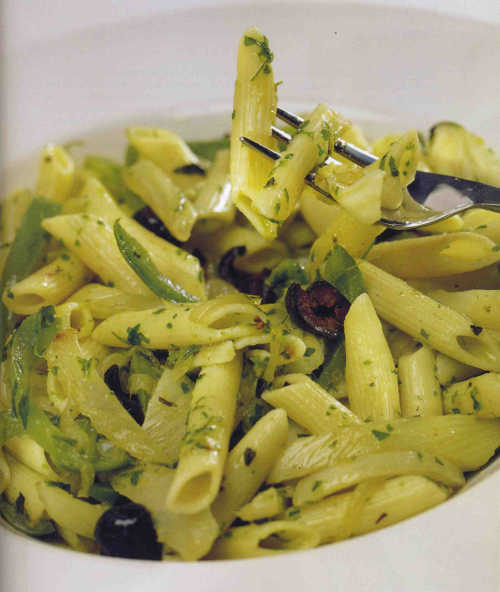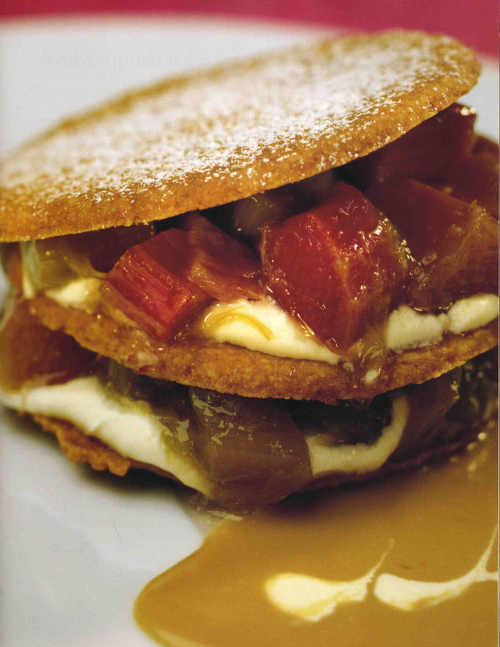Georgina Campbell's Cookery Feature - Celebrating Vegetables
Georgina Campbell
The UK’s National Vegetarian Week is scheduled for 18th-24th May and - while the nearest equivalent in Ireland is World Vegetarian Day in October, which is marked by the Vegetarian Society in Dublin - this is a good time to celebrate the health-giving qualities, versatility and downright deliciousness of vegetables.
Mainstream medical thinking is finally coming around to the idea that favouring plant based foods over meats is a wise choice for better health and, while I am not a vegetarian, this seems to make perfect sense to me.
I’ve always loved vegetables and, as a family, we eat far more than most and enjoy growing as much as possible too. My father was a mixed farmer and market gardener, so working with the season’s crops comes naturally and our meals revolve around seasonal vegetables, salads and fruit as a matter of course.
We enjoy at least a couple of virtually meat-free meals a week too - and, when travelling and ‘dining for Ireland’ for the Guide, it can be very restful to the system to opt for vegetarian dishes for a day.
Luckily, the vegetarian and almost-vegetarian options offered in Irish restaurants have improved dramatically of late - largely due to the growing popularity of restaurant vegetable gardens, the influence of the hugely successful GIY movement (www.giyinternational.org), and a newly fashionable international awareness of the potential of vegetables - so creative vegetable-led dishes have become mainstream choices and are much more widely available to please local diners and refresh jaded travellers alike.
Recently, there has also been a sharp increase of interest in vegan cooking, with far more vegan dishes highlighted on menus - and every indication that this more extreme form of vegetarianism is going mainstream too.
Our new love affair with vegetables has to be good for the health and wellbeing of the nation - and, providing it goes hand in hand with a new appreciation of the value of vegetables, and a willingness to pay a fair amount for quality locally produced food, it will be good for our growers too.
References: Information to help you find your inner vegetarian is available from the Vegetarian Society of Ireland (www.vegetarian.ie) and the Vegan Society (www.vegan.ie)
RECIPES:
Denis Cotter, owner-chef of the famed Café Paradiso in Cork, pioneered seriously creative vegetarian cooking - essentially ‘fine dining without the fuss’ - in Ireland when he opened his delightful little restaurant on Lancaster Quay in 1993, and it remains a place of pilgrimage for people who love great food that ‘just happens to be vegetarian’.
Dubliners are also licking their lips in anticipation of an ‘almost vegetarian’ sister restaurant that is to open in the capital later this year. These recipes - selected from his Café Paradiso cookbooks for their seasonality and relative simplicity - show just how beautiful, varied and utterly delicious vegetarian food can be.
 Asparagus and Gabriel cheese gratin
Asparagus and Gabriel cheese gratin
“I like asparagus roasted, grilled, warm in salads or dunked in mayonnaise, and all the other ways it likes to be done, but this is my favourite asparagus dish and the first one I reach for when the season starts. There are strong flavours here, so balance is important, which is why I like to do each plate separately. Too much of the cream sauce can drown the asparagus, too much of the crumble will spoil the texture as well as the flavour, and even the balance in the crumble is variable. The perfect gratin will have just enough sauce to be absorbed by the asparagus and the crumble, which is scattered loosely, but generously, over the plate. If you see someone scooping it up with their finger or licking the plate, you've miscalculated, but obviously not too badly.”
[Note: The famously tangy West Cork thermophilic cheese Gabriel is no longer available, but another hard cheese of character can be used instead.]
FOR FOUR:
• 16-20 asparagus spears
• 1 onion, quartered
• 4 whole garlic cloves
• 50mIs white wine
• 150mls cream
• 1 tsp strong prepared mustard
• salt and pepper
• 60g breadcrumbs
• 40g Gabriel, or other tangy hard cheese
• 1 dessertspoon butter
Snap the tough ends off the asparagus, wash them and save them. Cook the asparagus tips in boiling water for a few minutes - they should be just short of tender - then cool them.
Now put the ends into a pot with the onion and garlic, the wine and about 300mls of the asparagus water. Bring it to the boil and keep at a lively simmer for about 15 minutes.
Strain off the vegetables and return the stock to the pan. You should have 150mls left at most; if there is more, simply boil it for a few minutes more to reduce the volume.
Then pour in the cream and mustard, and cook the sauce at a rolling boil until you have about 200mls of a fairly thick pouring sauce. Season cautiously with salt and pepper.
Make a crumble by combining the crumbs and cheese and stirring in the butter, which should be softened almost to the point of melting, and some seasoning. Now you have two choices, depending on your facilities and ambitions: (a) arrange the asparagus in an oven dish with the cream poured over, sprinkle a generous but not blanketing amount of the crumble over that, and place the dish under a hot grill until the crumble browns and the cheese begins to melt; or (b) arrange individual portions on plates and grill. I prefer the second, it only takes a minute for each plate and gives you much more control over the amount of sauce on each portion.
 Penne with fennel, green peppers, olives and roasted garlic-parsley oil
Penne with fennel, green peppers, olives and roasted garlic-parsley oil
“While I would generally go along with the idea that the best thing to go with pasta is whatever you've got in the cupboard, a bottle of wine and an appetite, this is one of those specific recipes. I've tried (and eaten happily) other vegetables with this sauce, but there is no denying that this lot were made for each other. The recipe for the garlic-parsley oil makes about 500mls, enough for at least ten people, but it's hard to make less unless you've got miniature kitchen equipment. It will keep well in the fridge for a week or so.”
FOR FOUR:
• 16 cloves garlic
• 300mls olive oil
• 2 large handfuls, about 80-l00g, parsley
• salt and pepper
• 450g dried penne pasta
• 1 fennel bulb
• 2 green peppers
• 12-16 black olives, stoned and halved
First make the oil. Make two or more times the recipe if you've got the ingredients. Separate the garlic cloves from each other, toss them in a little olive oil and roast them in a low to moderate oven until they are soft and lightly browned. The garlic should now be easy to squeeze from its skin.
Put it in a food processor with the parsley and blend to a fairly fine pulp. Pour in the olive oil and blend to get an oil of slightly thick pouring consistency. Season with salt and pepper.
Boil a large pot of water for the pasta, then start cooking the vegetables. Cut the fennel in half lengthways, then again into quarters. Chop these pieces crossways into thin slices.
In a heavy pan, warm a little olive oil and cook the fennel gently for about five minutes, then chop the green pepper in the same way and add it to the pan. Continue cooking gently, stirring often, for another five minutes until the vegetables are tender but not soft. Add the olives and cook for just one minute more.
Meanwhile cook the pasta in the water, drain it and return it to the pot. Stir in the vegetables and four tablespoons of the garlic-parsley oil and warm it through.
Before serving, test for seasoning and flavour, you may want to add more of the oil. A hard, mature sheep's cheese, grated or shaved, is brilliant with this, though parmesan is more than good enough.
 Rhubarb shortbread with butterscotch sauce
Rhubarb shortbread with butterscotch sauce
“The challenge in a restaurant when dealing with the season's finest fruit is to present it at its simple best while making a dish interesting enough to take people's minds off the chocolate. Some fruits carry the extra burden of being loved and hated equally, and rhubarb is right up there with blackcurrants and gooseberries in that context. Given that only rhubarb lovers will order any dish with rhubarb, it is essential that it then has enough rhubarb to satisfy them, while still being pretty, interesting, etc etc. This recipe is one of those attempts to pull off that juggling feat. The serious rhubarb person will, however, be satisfied only by a large steaming bowl of stewed rhubarb or a mountain of rhubarb crumble. The rhubarb and biscuits can be done a day or more ahead, but make sure the rhubarb is at room temperature when you serve it.”
FOR FOUR:
• 1 large bundle of rhubarb sticks
• 300g caster sugar
• l00g unsalted butter
• 150g plain flour
• rind of ½ orange
• l00g light muscovado sugar
• 50g unsalted butter
• 500mls single or double cream
• icing sugar, to serve
Chop the rhubarb into pieces of about 15mm long. Cook these very gently with 250g of sugar and one tablespoon of water until the rhubarb is just tender - it makes the world of difference it the rhubarb pieces don't totally disintegrate. Carefully transfer the rhubarb to a bowl to cool.
Preheat the oven to 375°F (Gas Mark 5). Cream the butter and 50g of sugar until fluffy, then beat in the flour and orange rind.
Wrap this dough and chill it for 30 minutes, then roll it to about 5mm thickness and cut out round biscuits of about 8cm diameter. You will need three per person.
Bake the biscuits on an oven tray covered with baking parchment for 20-25 minutes. They should be pale brown but not quite crisp - they will crisp fully as they cool.
To make the butterscotch sauce, put the muscovado sugar, unsalted butter and 300mls of the cream into a pan, bring it slowly to a boil, then boil it for two minutes. Leave the sauce to cool to room temperature before using it. Whisk the remaining 200mls of cream until softly whipped.
Place a shortbread biscuit on each plate, spread a layer of cream on it, then pile on a generous tablespoon of rhubarb. Put another biscuit on that, then more cream and rhubarb, then a third biscuit. A light dusting of icing sugar finishes it off nicely.
Pour a stream of the butterscotch sauce around the biscuits. Obviously a fork won't pass easily through that lot, so I tend to lean the third biscuit half- off the construction to make it easy for people who are nervous about demolishing pretty plates of food. But that's a restaurant thing and your guests won't be like that, will they?






There are currently no comments
Leave a comment
Not a member? Register for your free membership now!
Or leave a comment by logging in with: